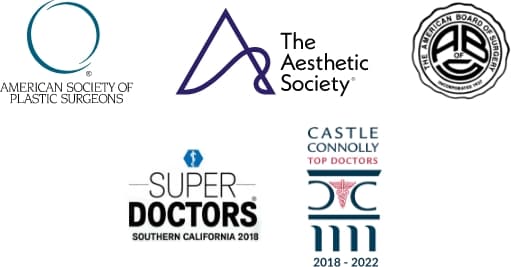Dr. Richardson and Dr. Memsic are two of the top breast surgeons in Los Angeles, using innovative techniques to create excellent clinical and aesthetic outcomes.
Schedule a Visit
Bedford Breast Center
436 N Bedford Dr, Ste 308
Beverly Hills, CA 90210
Phone: (310) 278-8590
Monday – Friday: 9 a.m.– 5 p.m.
Diagnostic Imaging in Los Angeles
Accurate, high-quality, thorough imaging is fundamental in breast cancer diagnosis. Bedford Breast Center’s diagnostic imaging division in Beverly Hills offers Los Angeles-area patients the latest and most advanced technologies in one convenient and compassionate setting.
Our Diagnostic Imaging Center
Created by women for women, Bedford Breast Center offers superior clinical care in a first-class environment. We use only the most state-of-the-art diagnostic tools and ensure you feel relaxed and comfortable throughout your experience at our medical center.
As part of our mission to help raise the bar on the standard of breast care for all women, our friendly staff and breast surgeons treat patients with grace, kindness, and respect—whether you are seeing us for surgery or a routine screening.
What Tests Are Done To Diagnose Breast Cancer?
Standard imaging technology currently used for both screening and diagnostic procedures includes:
- Mammography: A mammogram is an X-ray examination of the breast. It can show abnormal areas in the breast, such as masses or clusters of calcium. It can dissect layers of breast tissue, allowing the detection of breast cancers, cysts, and benign tumors before being detected by touch.
- Breast Ultrasound: Uses sound waves to see internal structures of the breast and whether a breast lump is a solid lump or filled with fluid, helping to distinguish between suspicious and non-suspicious masses.
- Breast MRI: Uses a powerful magnetic field, radio waves, and a computer to produce detailed images of the breast tissue, including any abnormalities that may be present.
- Breast Biopsy: We remove small tissue samples of the breast for laboratory testing. This test helps us evaluate a suspicious area of the breast to determine the presence of breast cancer. There are several types of biopsies, including MRI-guided breast biopsy, ultrasound-guided breast biopsy, and stereotactic 3D-guided breast biopsy.
What Percentage of Diagnostic Screening Results Are Cancerous?
According to the American Cancer Society, doctors call back a small percentage of women to undergo additional tests after their initial mammogram. Specifically, 10% of women return for more tests, and only 8 to 10% of that percentage are biopsied. Of those biopsies, 80% are diagnosed as benign.
Are Diagnostic Mammograms Painful?
The compression of the breast can cause discomfort, and for some, it may cause pain. A few factors may contribute to pain during a mammogram. Patient anxiety, technician skill, and breast structure may affect whether the procedure hurts. If you feel uncomfortable, the machine may not be properly positioned. Incorrect machine height can lead to neck pain because you have to contort your back during the procedure. Be sure to let our technician know if your position feels uncomfortable. Furthermore, if you have fibrocystic breasts (presence of cysts), you are more likely to experience pain during the procedure.




Diagnostic Imaging at Bedford Breast Center
Bedford Breast Center offers world-class diagnostic imaging services. We understand your fears and concerns, and that’s why we make sure you receive the best care possible from the moment you walk through our doors.
Here’s an overview of how the following tests are performed and what you can expect at your appointment:
3D Mammography for Advanced Imaging
For your mammography procedure, you will have to undress above the waist. You will be provided with a gown to wear. You will then stand in front of an X-ray machine equipped to perform 3D mammography, and a technologist will position one of your breasts on a platform with a transparent plastic plate. The technician will adjust the platform to match your height and assist you in positioning your head, arms, and torso. An upper plate will compress the breast for a few seconds, allowing an unobstructed view of the tissue.
The 3D mammogram machine will move above you from one side to the other as it captures images. You may be asked to hold your breath for a few seconds and to stand still. After capturing images, the pressure on your breast is released, and you will need to change position for the subsequent images. The technician will repeat the process on your other breast. The entire procedure can be performed in 5 to 10 minutes.
Breast Ultrasound for Safe Diagnosis
Breast ultrasound does not replace the need for a mammogram, but we typically perform one to check abnormal results from a 3D mammogram.
You will need to undress from the waist up and lie back on a table for the procedure. The doctor will apply a clear gel to your breast to enhance the delivery of sound waves through your skin. Your doctor will then use a wand-like handpiece called a transducer to send and receive high-frequency sound waves over your breast. The transducer records changes in the pitch and direction of the sound waves bouncing off the internal structures of your breast, while a computer monitor creates a real-time recording of the images. If anything suspicious is visible, we will capture more images.
Precise Results With Breast Biopsy
Your doctor will order a biopsy if suspicious results appear in your mammogram or breast ultrasound or if a lump is palpable during an examination. There are several types of breast biopsy procedures. The type of procedure used depends on the size and location of the breast lump detected.
- Fine-needle aspiration breast biopsy (FNA): You will lie on a table while your breast surgeon inserts a very thin needle into the lump to extract a sample of fluid or tissue. No incision will be needed. This type of biopsy can help determine if the lump is fluid-filled or solid.
- Core-needle biopsy: The procedure is similar to an FNA, but we use a larger needle in this type of biopsy to collect cylinders of tissue (each approximately the size of a grain of rice). We usually perform this procedure while you are under local anesthesia—meaning you are awake, but the breast is numb. There are several ways to perform core-needle biopsies; some procedures use imaging equipment such as ultrasound, MRI, or X-ray equipment to help guide the needle during the biopsy.
- Open/surgical biopsy: We usually perform this procedure if a lump is located in an area that cannot be reached with a core-needle biopsy. This surgical procedure is performed while you are under local anesthesia. You are awake, but the breast is numbed. Next, a cut is made in your breast, and the surgeon removes part or all of the lump, including a small amount of normal-looking tissue attached to it. We can use wire localization before surgery if the lump is too small, deep, or challenging to find. This involves using a thin needle with a very thin wire positioned within the breast mass. The surgeon follows this wire to find the lump. After surgery, we examine the sample in the lab to look for abnormal or cancerous cells. Surgical biopsies are more invasive, requiring stitches and usually leaving a scar.
Our world-class facility serves patients from throughout Los Angeles, Southern California, and nationwide. To learn more about diagnostic imaging, call us at (310) 278-8590 or contact us using the online form to schedule an appointment.
